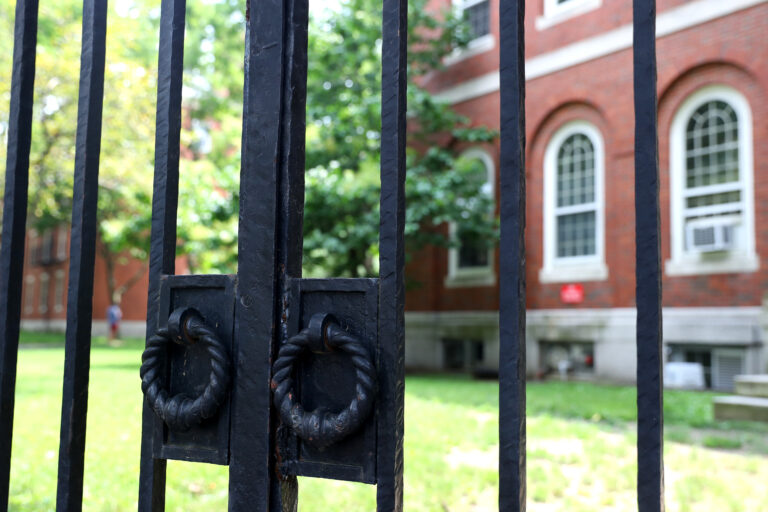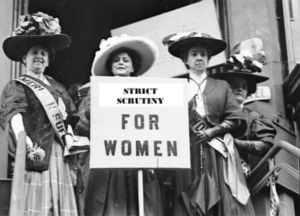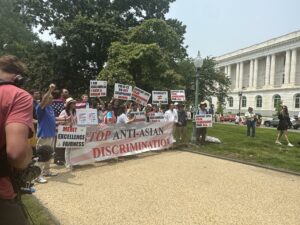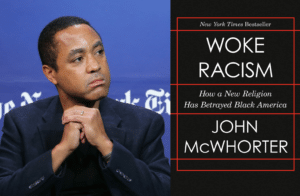‘Strict scrutiny’ will determine Harvard’s anti-Asian discrimination case. What is it?

The students suing Harvard over its race-conscious admissions process are asking a simple question: What is Harvard’s compelling interest in discriminating against Asian Americans?
Harvard’s attorneys will soon be trying to answer that question in front of the Supreme Court: The Court just granted cert in Students for Fair Admissions v. Harvard. Pacific Legal Foundation filed an amicus brief in support of the petitioners.
This is a controversial case: Supporters of affirmative action say Harvard’s race-conscious admissions process is necessary to meet the school’s diversity, equity, and inclusion goals. Some have slammed Students for Fair Admissions for adding to the Supreme Court’s “culture war docket.”
But the petitioners are simply asking Harvard to meet the same standard that all racially discriminatory laws must meet: the standard of strict scrutiny.
Strict scrutiny is a legal test that’s applied to any government violation of the Equal Protection Clause that involves race. To pass muster under strict scrutiny, a policy must further a “compelling interest” and be narrowly tailored to that interest. Harvard is not a public institution, but because it accepts federal funding, its policies are subject to the same strict scrutiny standard as government policies.
And that’s bad news for Harvard.
“Strict scrutiny leaves few survivors,” Justice David Souter once noted in a dissent. He’s right: Most discriminatory policies and laws don’t survive under strict scrutiny.
That’s by design. It should be difficult to show that you have a compelling interest in treating individuals differently on the basis of race.
In Loving v. Virginia (1967), the Supreme Court rejected Virginia’s argument that its ban on interracial marriage served a compelling state interest. “There is patently no legitimate overriding purpose independent of invidious racial discrimination which justifies this classification,” Chief Justice Earl Warren wrote in the opinion.
In City of Richmond v. J. A. Croson Company (1988), the Court found that Richmond “failed to demonstrate a compelling governmental interest” to justify its requirement that 30 percent of city construction contracts go to minority-owned businesses. “The dream of a Nation of equal citizens in a society where race is irrelevant to personal opportunity and achievement would be lost in a mosaic of shifting preferences based on inherently unmeasurable claims of past wrongs,” Justice Sandra Day O’Connor wrote in the opinion.
One of the few instances in which a law did survive strict scrutiny involved anti-Asian discrimination: A Japanese American man living in California during World War II sued over the president’s Executive Order relocating Japanese Americans to internment camps. Fred Korematsu was arrested at home after he refused to obey orders to leave. In a decision that is now widely considered a black mark on American history, the Supreme Court agreed with the government that “exclusion of those of Japanese origin was deemed necessary because of the presence of an unascertained number of disloyal members of the group,” as Justice Hugo Black wrote in the opinion for Korematsu v. United States (1944). Korematsu has been largely discredited since, and the Supreme Court now acknowledges that it was wrongly decided.
As PLF’s amicus brief in Students for Fair Admissions v. Harvard makes clear, there’s no question that Harvard’s admissions process discriminates against Asian applicants. Harvard’s own Office of Institutional Research shows that by all metrics—including the highly subjective “personal rating” that Harvard gives to applicants—Asian Americans should make up a higher percentage of the student body than they currently do.
The question to Harvard is: How does this serve a compelling interest?
PLF Senior Attorney Wencong Fa, the primary author of PLF’s amicus brief, says it doesn’t.
“Harvard needs to provide evidence that its discriminatory admissions process serves a compelling interest, and that it is carefully tailored to further that interest,” Fa says. “But it can’t. Harvard is failing to meet the strict scrutiny standard.”
However, Fa warns, “the Supreme Court has historically shown universities a lot of deference here.” In Grutter v. Bollinger (2003), the Court found that the University of Michigan Law School’s race-conscious admissions process met the strict scrutiny standard.
But Fa points out a couple things about the Grutter precedent. First, he says, “the Court never said it was okay to stereotype applicants by race.” In fact, the Grutter decision—written by Justice O’Connor—specifically says that applicants must be treated as individuals, and that “truly individualized consideration demands that race be used in a flexible, nonmechanical way.”
“That’s not what’s happening in the Harvard case,” Fa says. “Harvard uses broad racial classifications that perpetuate stereotypes about Asians.” For example, a Harvard admissions officer noted that one Asian-American applicant was “quiet and of course wants to be a doctor.”
The Grutter decision also held that narrow tailoring “requires that a race-conscious admissions program not unduly harm members of any racial group.”
“But Asian students clearly are harmed,” Fa says. Asian Americans who apply to Harvard are harmed by the admissions process, which incentivizes Asian students to forgo STEM tracks in order to distinguish themselves from stereotypes about Asians that Harvard’s process perpetuates.
“Strict scrutiny is an important piece of the Students for Fair Admissions v. Harvard case,” Fa says. “That’s what the legal argument hinges on. But embedded in there is a bigger-picture issue: Harvard’s admissions process distributes benefits and burdens on the basis of race. And at the end of the day, that’s simply wrong.”
The Supreme Court will likely hear oral arguments for Students for Fair Admissions v. Harvard in October 2022.











